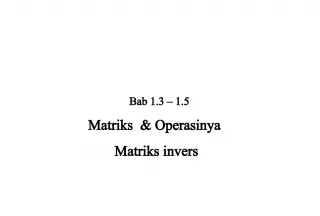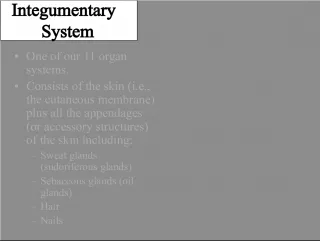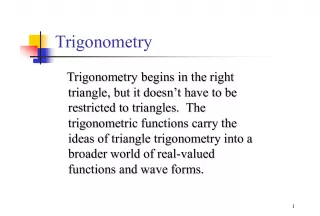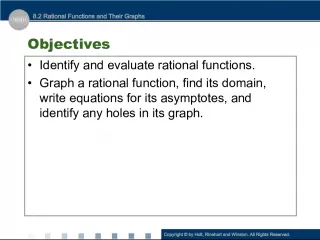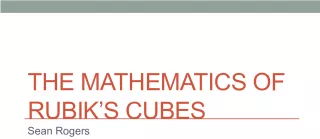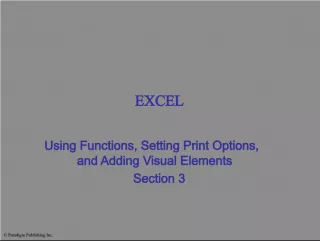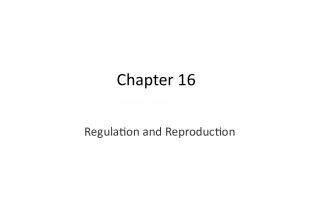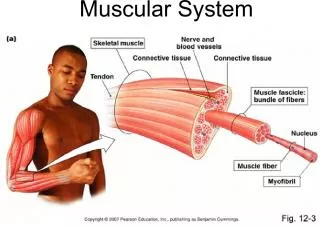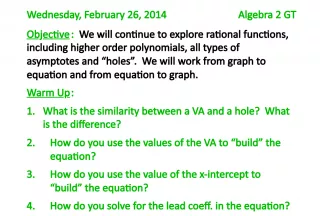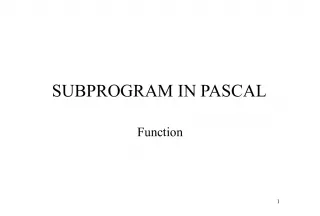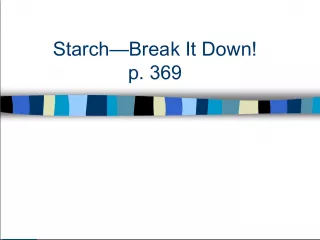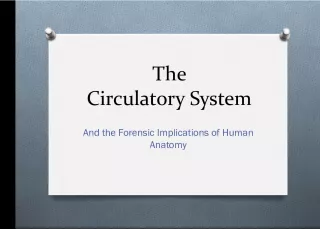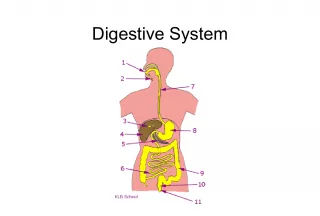Understanding One-to-One Functions and their Inverses


One-to-One functions have at most one output for every input, making them ideal for finding inverses. Learn more about them graphically.
- Uploaded on | 9 Views
-
 susanbrooks
susanbrooks
About Understanding One-to-One Functions and their Inverses
PowerPoint presentation about 'Understanding One-to-One Functions and their Inverses'. This presentation describes the topic on One-to-One functions have at most one output for every input, making them ideal for finding inverses. Learn more about them graphically.. The key topics included in this slideshow are . Download this presentation absolutely free.
Presentation Transcript
Slide1Inverse Functions
Slide2FunctionIf for every x there exists at most one y One – to – One Function If for every x there exists at most one y AND for every y there exists at most one x Function One – to – One Function NOT One – to – One
Slide3Only one – to – one functions have inversesGRAPHICALLY One – to – One Function Inverse
Slide4One – to – One FunctionInverse Function and Inverse have Symmetry about the line y = x
Slide5find the inverse graph of the function below, if it exists.Since not ONE – TO – ONE, no inverse function exists
Slide6find the inverse graph of the function below, if it exists.(-7, -5) (-5, -7) (-4, 1) (1, -4) (0, 3) (3, 0) (7, 4.5) (4.5, 7)
Slide7find the inverse graph of the function below, if it exists.
Slide8Finding inverse functions algebraically
Slide9Finding inverse functions algebraicallyPCH ONLY – LOOK AT PROBLEM 68
Slide10Derivatives of Inverse FunctionsIf f is differentiable at every point on an interval, and f ’ is never zero on the interval, then: is differentiable at every point on the interior of the Interval and its value at the point f(x) is:
Slide11find the derivative of the inverse of f(x) = 5 – 4x evaluatedat c = ½
Slide12find the derivative of the inverse of evaluatedat c = 4 Not One-to-One However….One-to-One on [2, 6] which not only includes c = 4, but it also eliminates f ‘ (x) = 0 issue as well Alternative…….
Slide13find the derivative of the inverse of evaluatedat c = 4
Slide14find the derivative of the inverse of at c = 1
